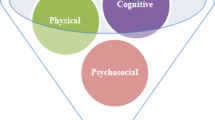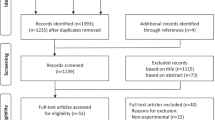Abstract
Various programs effectively teach children to cross streets more safely, but all are labor- and cost-intensive. Recent developments in mobile phone technology offer opportunity to deliver virtual reality pedestrian environments to mobile smartphone platforms. Such an environment may offer a cost- and labor-effective strategy to teach children to cross streets safely. This study evaluated usability, feasibility, and validity of a smartphone-based virtual pedestrian environment. A total of 68 adults completed 12 virtual crossings within each of two virtual pedestrian environments, one delivered by smartphone and the other a semi-immersive kiosk virtual environment. Participants completed self-report measures of perceived realism and simulator sickness experienced in each virtual environment, plus self-reported demographic and personality characteristics. All participants followed system instructions and used the smartphone-based virtual environment without difficulty. No significant simulator sickness was reported or observed. Users rated the smartphone virtual environment as highly realistic. Convergent validity was detected, with many aspects of pedestrian behavior in the smartphone-based virtual environment matching behavior in the kiosk virtual environment. Anticipated correlations between personality and kiosk virtual reality pedestrian behavior emerged for the smartphone-based system. A smartphone-based virtual environment can be usable and valid. Future research should develop and evaluate such a training system.

Similar content being viewed by others
References
Adesso NA (1974) An evaluation of the Champaign-Urbana Safety Town program. Master’s thesis, University of Illinois at Urbana-Champaign. http://files.eric.ed.gov/fulltext/ED104561.pdf
Arns LL, Cerney MM (2005) The relationship between age and incidence of cyberskciness among immersive environment users. In: IEEE virtual reality (VR’05), pp 267–268
Bastawrous A, Hennig B, Livingstone I (2012) mHealth possibilities in a changing world: distribution of global cell phone subscriptions. J Mob Technol Med 1:22–25
Benet-Martinez V, John O (1998) Los Cinco Grandes across cultures and ethnic groups: multitrait-multimethod analyses of the big five in Spanish and English. J Personal Soc Psychol 75:729–750
Brooks JO, Goodenough RR, Crisler MC, Klein ND, Alley RL, Koon BL et al (2010) Simulator sickness during driving simulation studies. Accid Anal Prev 42:788–796
Glasgow RE, Vinson C, Chamber D, Khoury MJ, Kaplan RM, Hunter C (2012) National Institutes of Health approaches to dissemination and implementation science: current and future directions. Am J Public Health 102:1274–1281
Grimshaw JM, Eccles MP, Lavis JN, Hill SJ, Squires JE (2012) Knowledge translation of research findings. Implement Sci 7:50
Haagsma JA, Graetz N, Bolliger I, Naghavi M, Higashi H, Mullany EC et al (2016) The global burden of injury: incidence, mortality, disability-adjusted life years, and time trends from the Global Burden of Disease Study 2013. Injury Prev 22:3–18
Institute for Health Metrics and Evaluation (IHME) (2016) Global Burden of Disease (GBD) visualizations. http://www.healthmetricsandevaluation.org/gbd/visualizations/country. Accessed 7 Dec 2016
John OP, Srivastava S (1999) The big five trait taxonomy: history, measurement, and theoretical perspectives. In: Pervin LA, John OP (eds) Handbook of personality: theory and research. Guilford, New York, pp 102–138
Kennedy RS, Lane NE, Berbaum KS, Lilienthal MG (1993) Simulator Sickness Questionnaire: an enhanced method for quantifying simulator sickness. Int J Aviat Psychol 3:203–220
Linnan H (2010) 2010 China: summary report and evaluation: child injury prevention project (2005–2010). http://www.unicef.org/evaldatabase/index_67780.html. Accessed 5 Dec 2016
Liu L, Watson B, Miyazaki M (1999) VR for the elderly: quantitative and qualitative differences in performance with a driving simulator. Cyberpsychol Behav 2:567–576
Ma S, Hu GQ, Li QF, Zhou MeG (2013) Pedestrian mortality between 2006 and 2010 in China: findings from non-police reported data. Biomed Environ Sci 26:853–856
Meir A, Oron-Gilad T, Parmet Y (2015) Are child-pedestrians able to identify hazardous traffic situations? measuring their abilities in a virtual reality environment. Saf Sci 80:33–40
Mercy JA, Rosenberg ML, Powell KE, Broome CV, Roper WL (1993) Public health policy for preventing violence. Health Aff 12:7–29
Morrongiello BA, Corbett M, Milanovic M, Beer J (2016) Using a virtual environment to examine how children cross streets: advancing our understanding of how injury risk arises. J Pediatr Psychol 41:265–275
Reason JT, Brand JJ (1975) Motion sickness. Academic Press, London
Sandels S (1968/1975) Children in traffic (J. Hartley, Ed.; H. Mabon, Trans.). Paul Elek, London
Schwebel DC, Gaines J, Severson J (2008) Validation of virtual reality as a tool to understand and prevent child pedestrian injury. Accid Anal Prev 40:1394–1400
Schwebel DC, Barton BK, Shen J, Wells HL, Bogar H, Heath G, McCullough D (2014) Systematic review and meta-analysis of behavioral interventions to improve child pedestrian safety. J Pediatr Psychol 39:826–845
Schwebel DC, Combs T, Rodríguez D, Severson J, Sisiopiku V (2016) Community-based pedestrian safety training in virtual reality: a pragmatic trial. Accid Anal Prev 86:9–15
Thomson J, Whelan KM (1997) A community approach to road safety education using practical training methods: the Drumchapel project. Department of Transportation, London. http://strathprints.strath.ac.uk/18700/1/strathprints018700.pdf
Thomson JA, Tolmie AK, Foot HC, Whelan KM, Sarvary P, Morrison S (2005) Influence of virtual reality training on the roadside crossing judgments of child pedestrians. J Exp Psychol Appl 11:175–186
Turner M, Griffin MJ (1999) Motion sickness in public road transport, passenger behaviour and susceptibility. Ergonomics 42:444–461
World Health Organization (2013) Pedestrian safety: a road safety manual for decision-makers and practitioners. World Health Organization, Geneva
World Health Organization (2016) The top 10 causes of death. http://www.who.int/mediacentre/factsheets/fs310/en/
Zerhouni EA (2005) Translational and clinical science—time for a new vision. N Engl J Med 353:1621–1623
Acknowledgements
Thanks to Anna Johnston and the students of the UAB Youth Safety Lab for their help with data collection, entry, and coding, and to the Digital Artefacts team for VR development and support. The research was supported by the Fogarty International Center and the Office of Behavioral and Social Sciences Research of the National Institutes of Health under Award Number D43TW010310 and by Grants R21HD078371 and R01HD088415 (Grant Nos. R21 TW010310, R21 TW010310) from the Eunice Kennedy Shriver National Institute of Child Health and Human Development. The content is solely the responsibility of the authors and does not necessarily represent the official views of the National Institutes of Health.
Author information
Authors and Affiliations
Corresponding author
Rights and permissions
About this article
Cite this article
Schwebel, D.C., Severson, J. & He, Y. Using smartphone technology to deliver a virtual pedestrian environment: usability and validation. Virtual Reality 21, 145–152 (2017). https://doi.org/10.1007/s10055-016-0304-x
Received:
Accepted:
Published:
Issue Date:
DOI: https://doi.org/10.1007/s10055-016-0304-x




